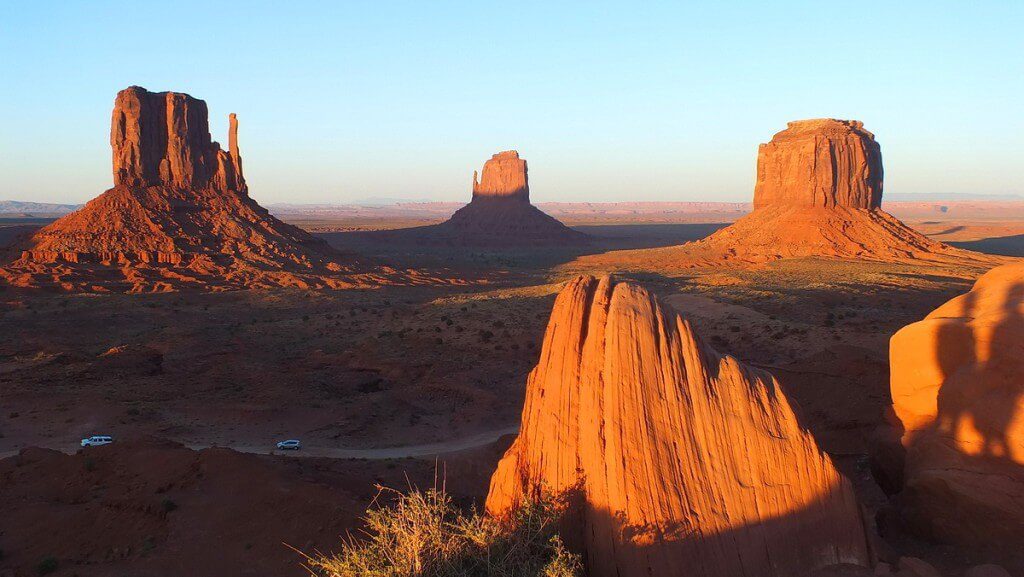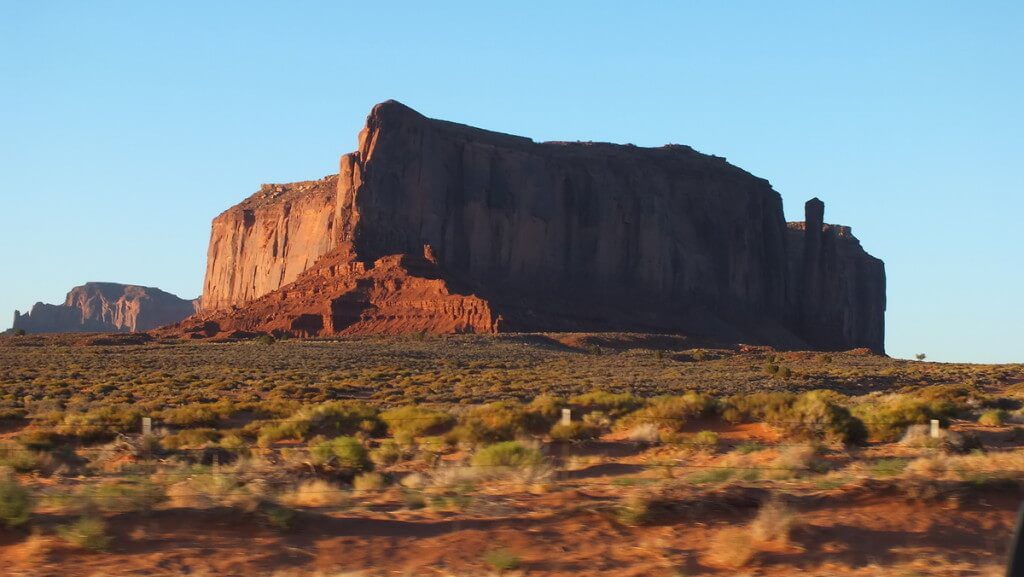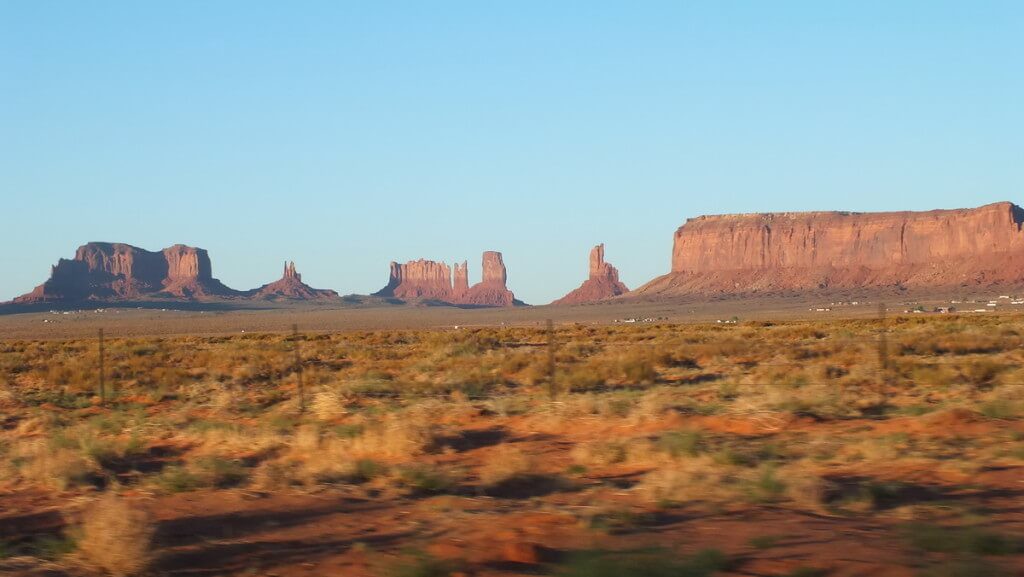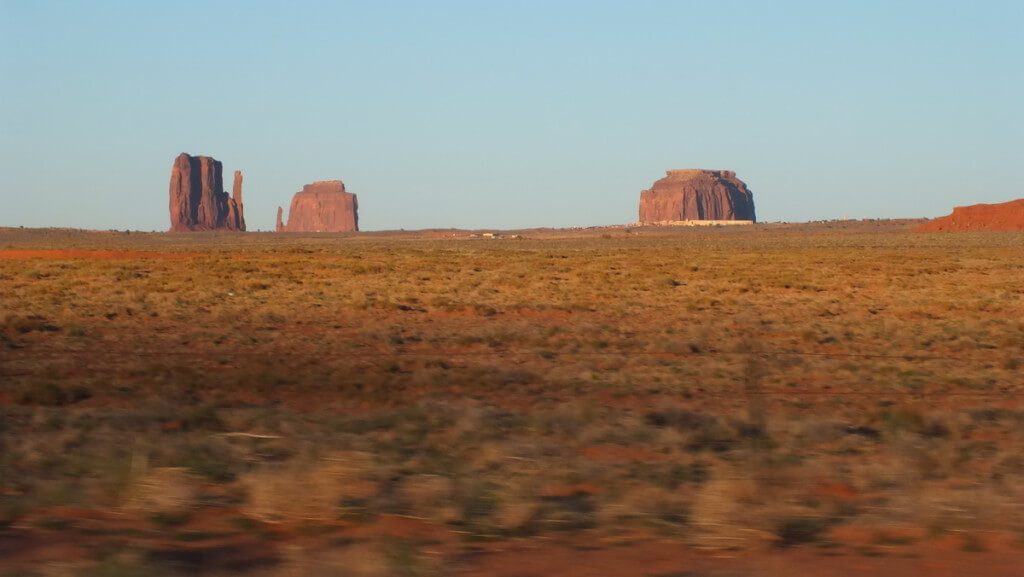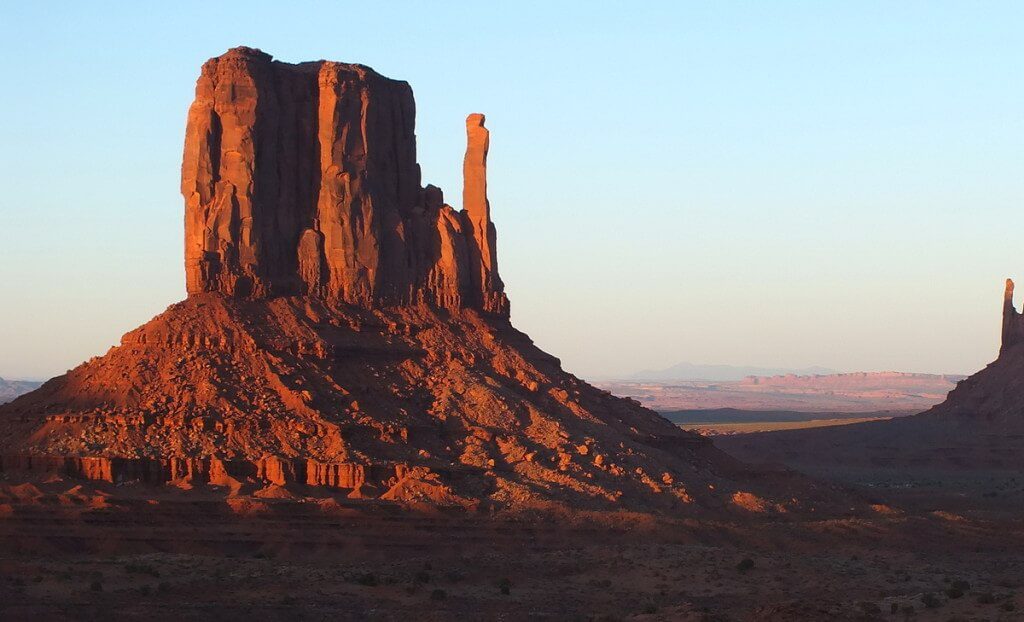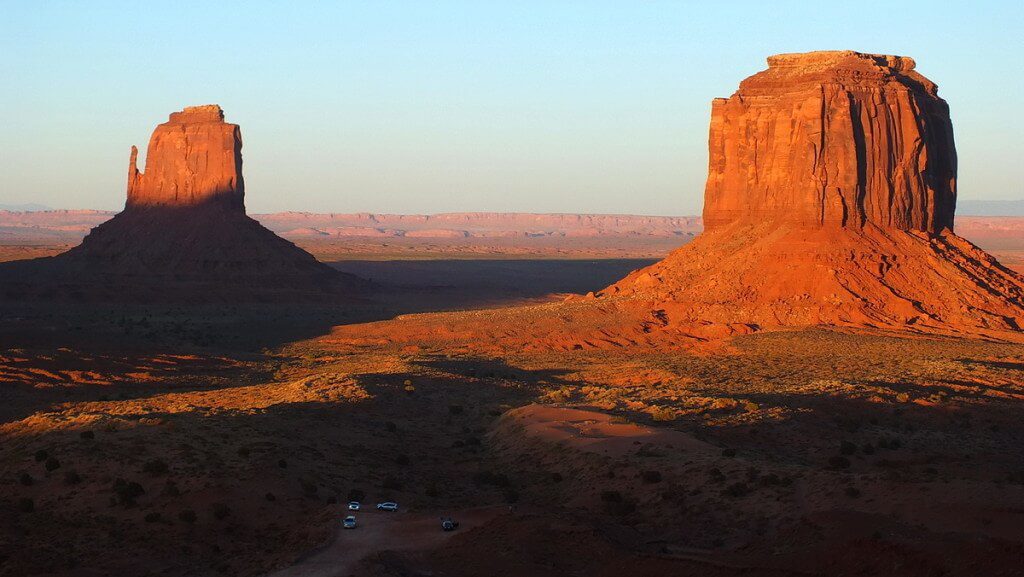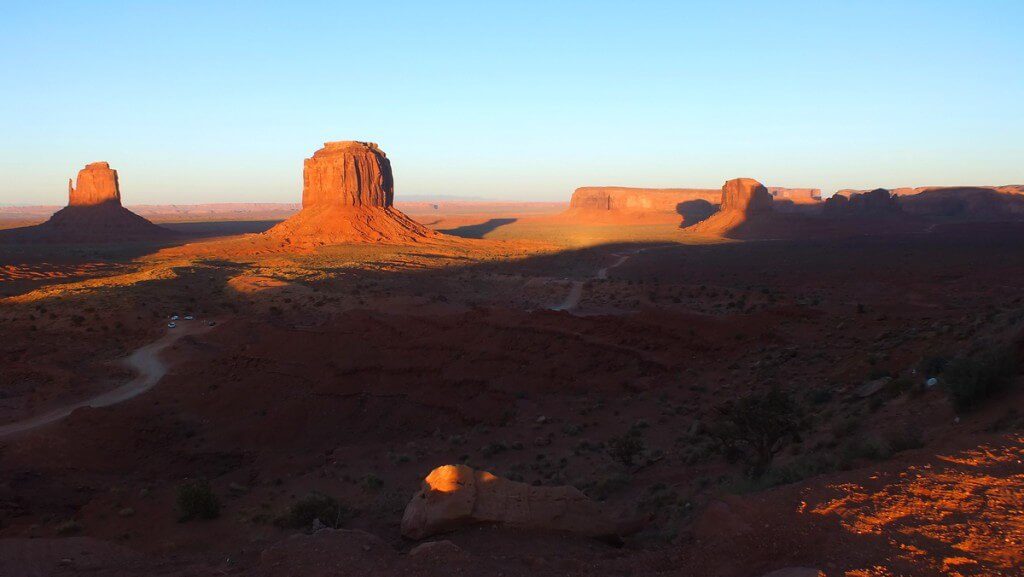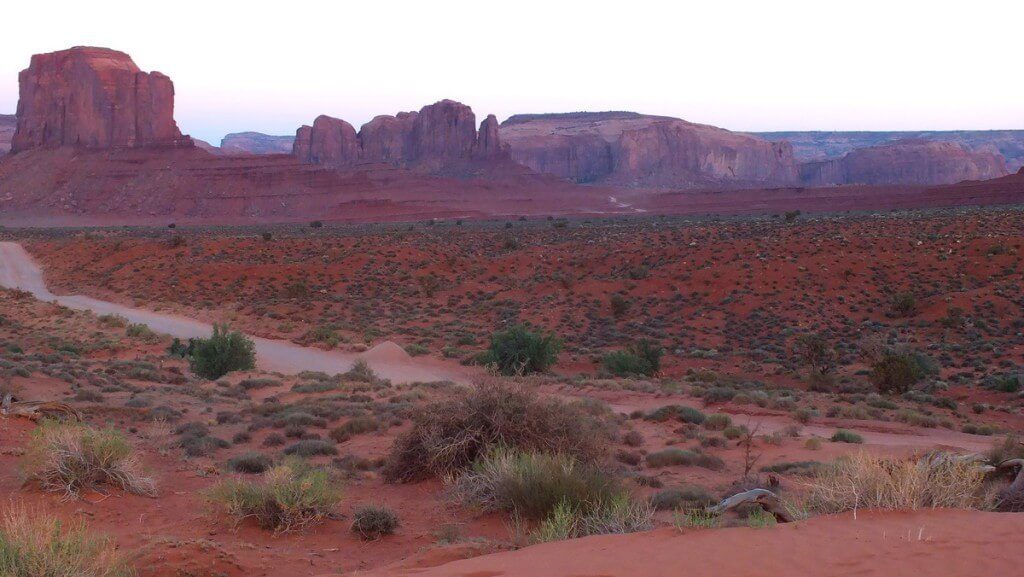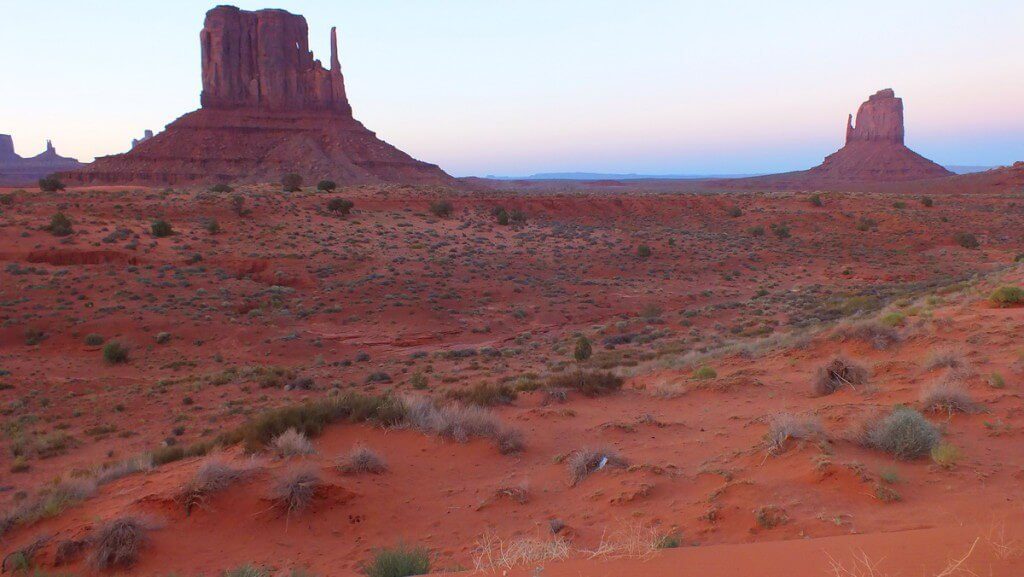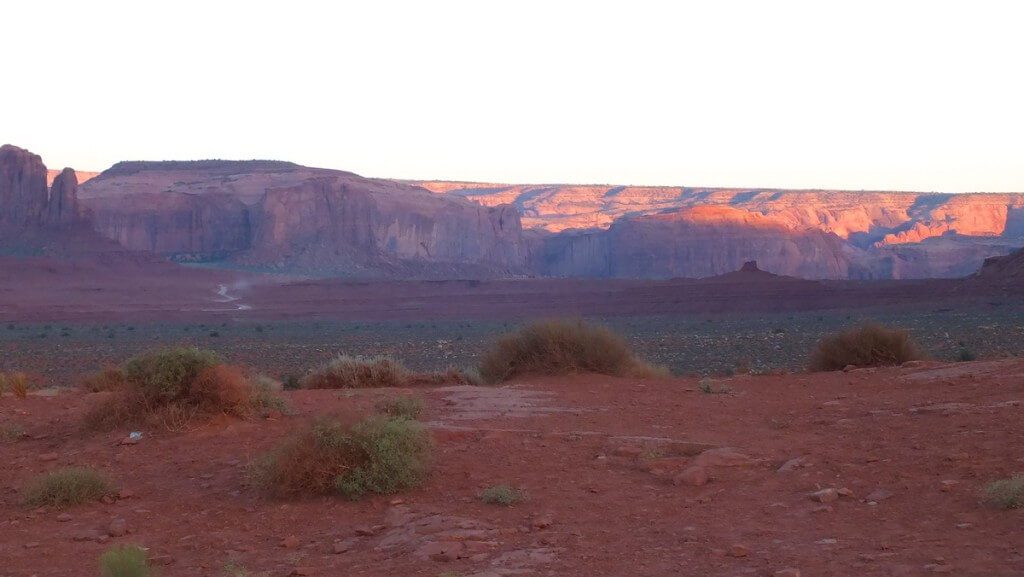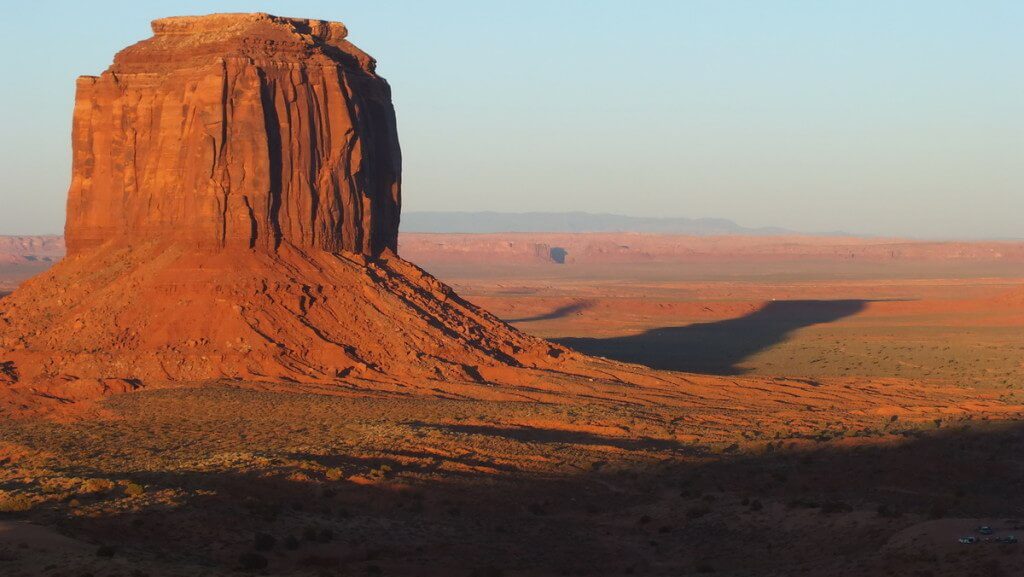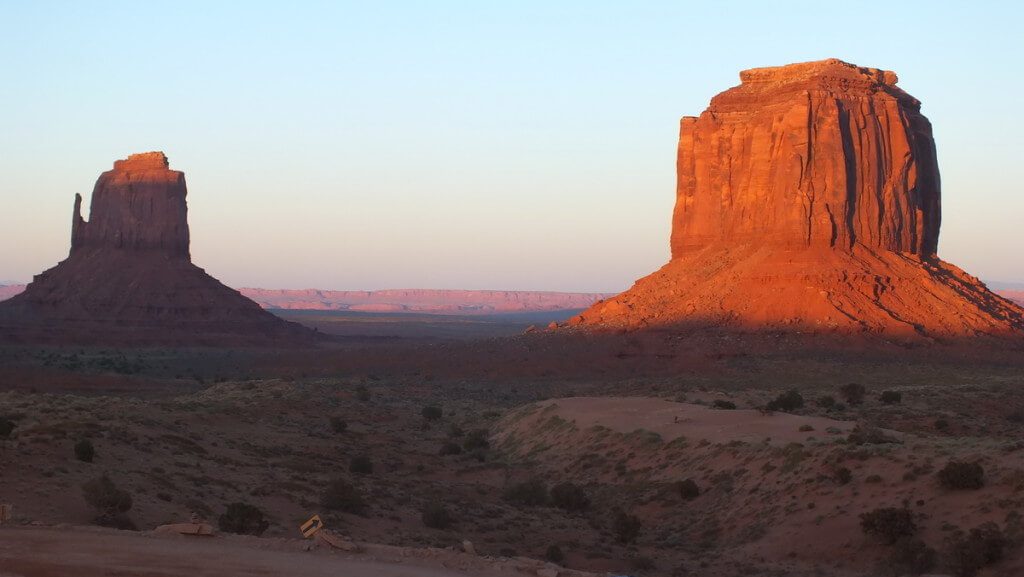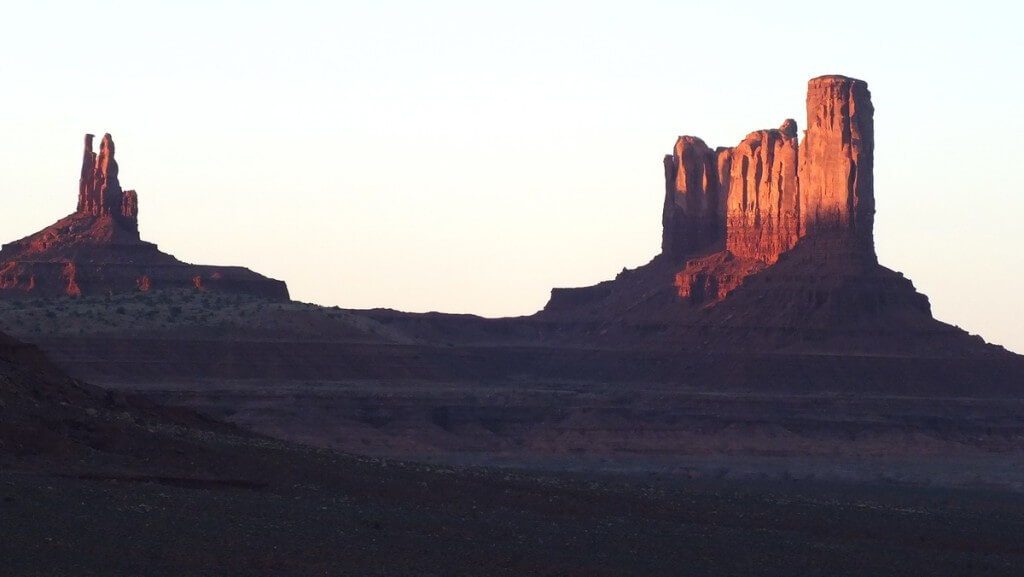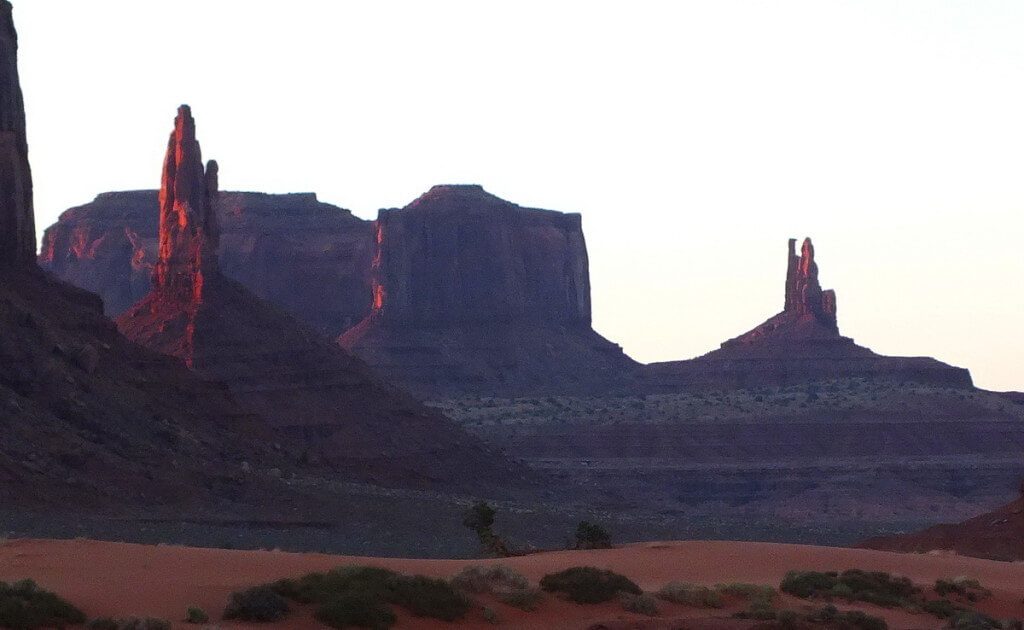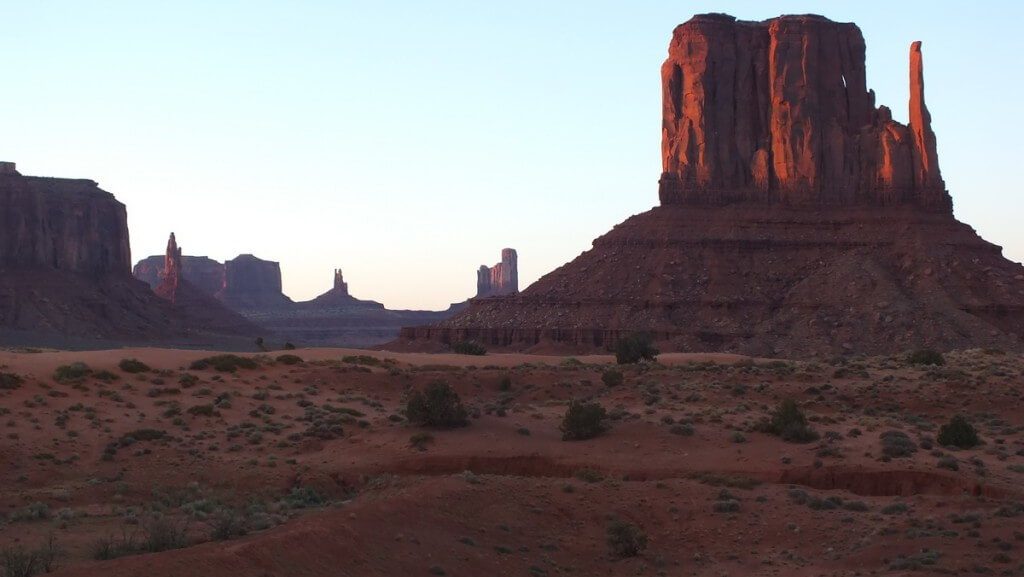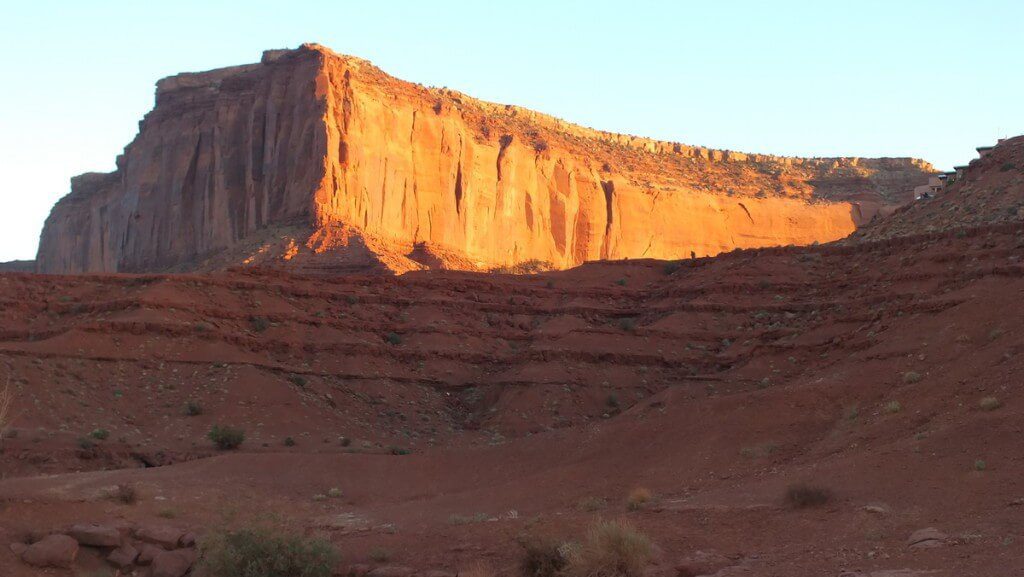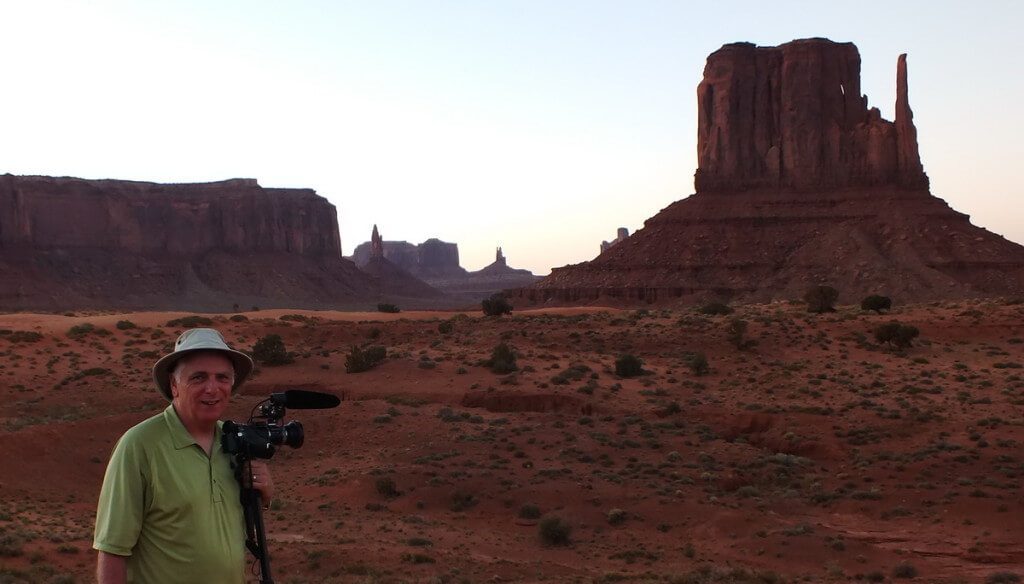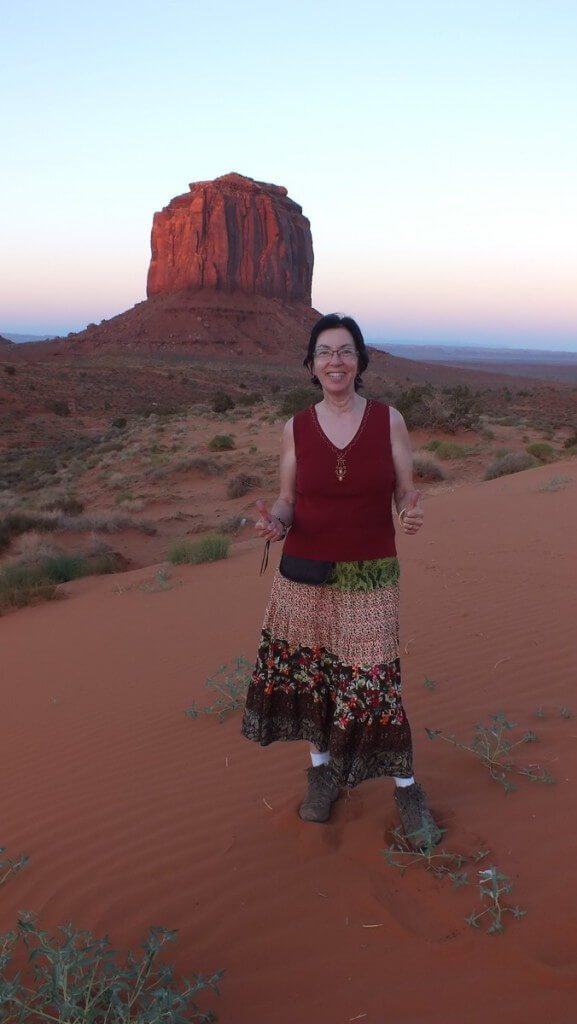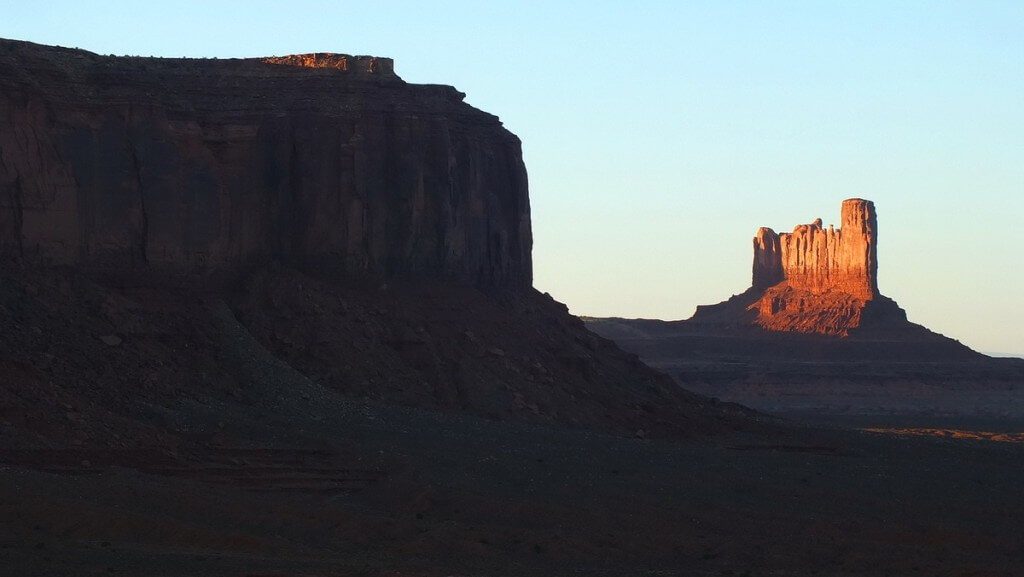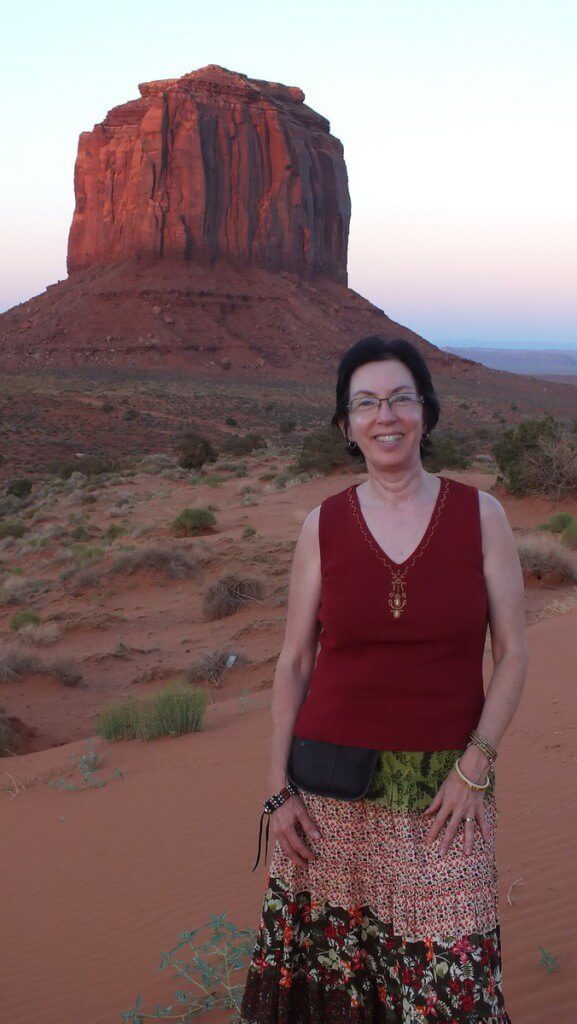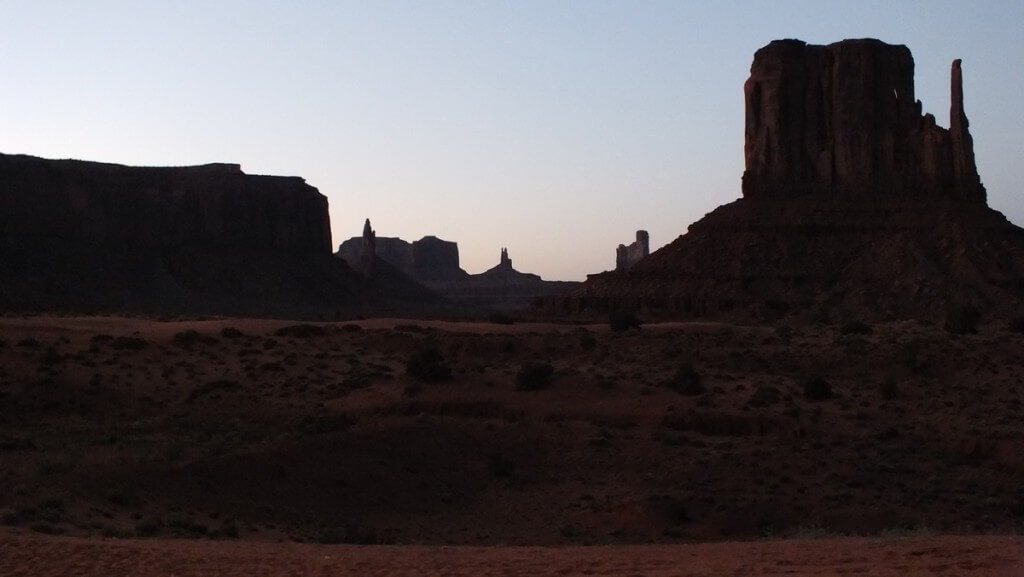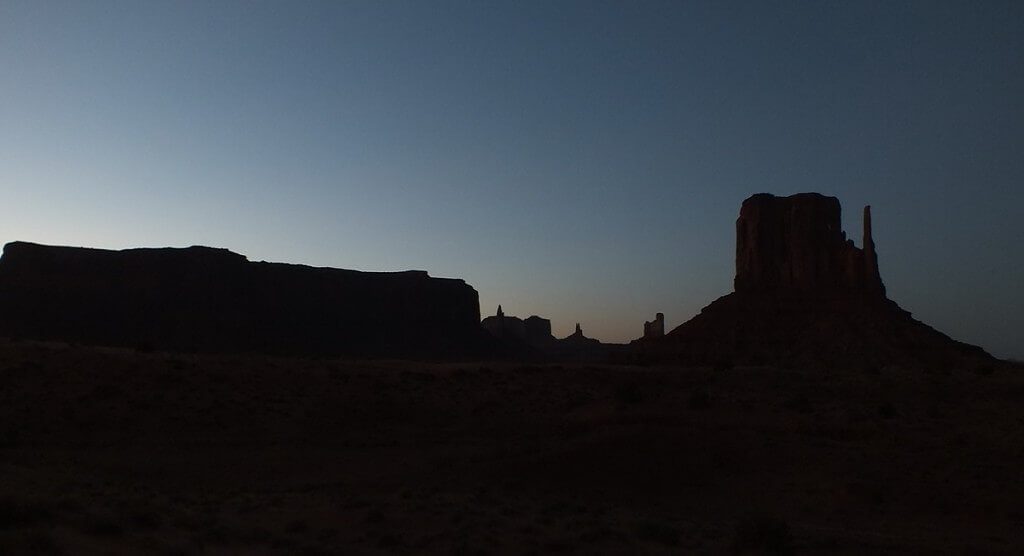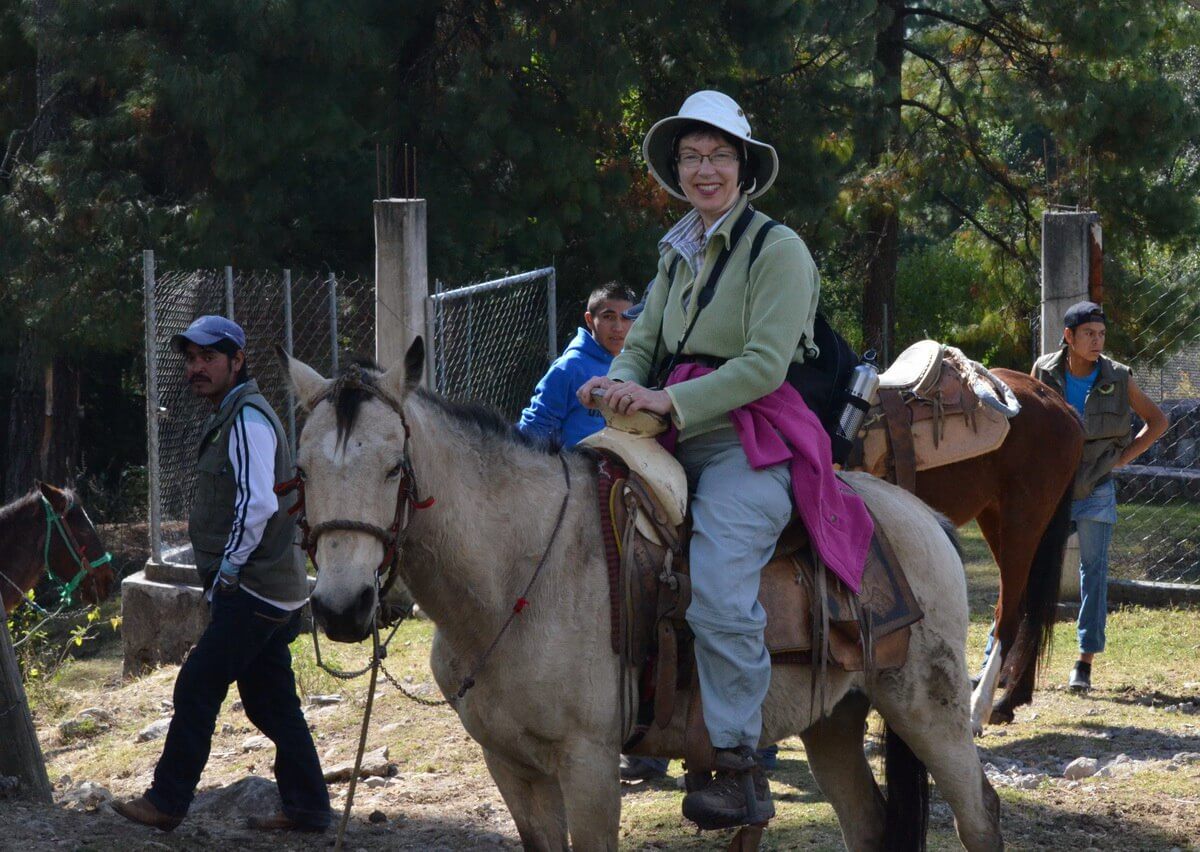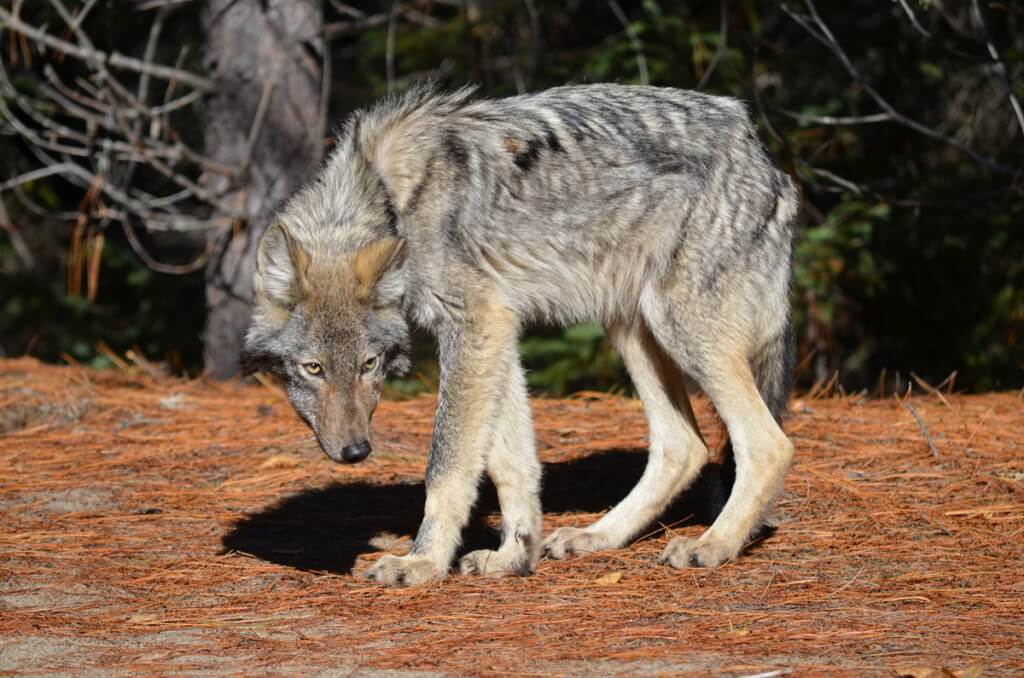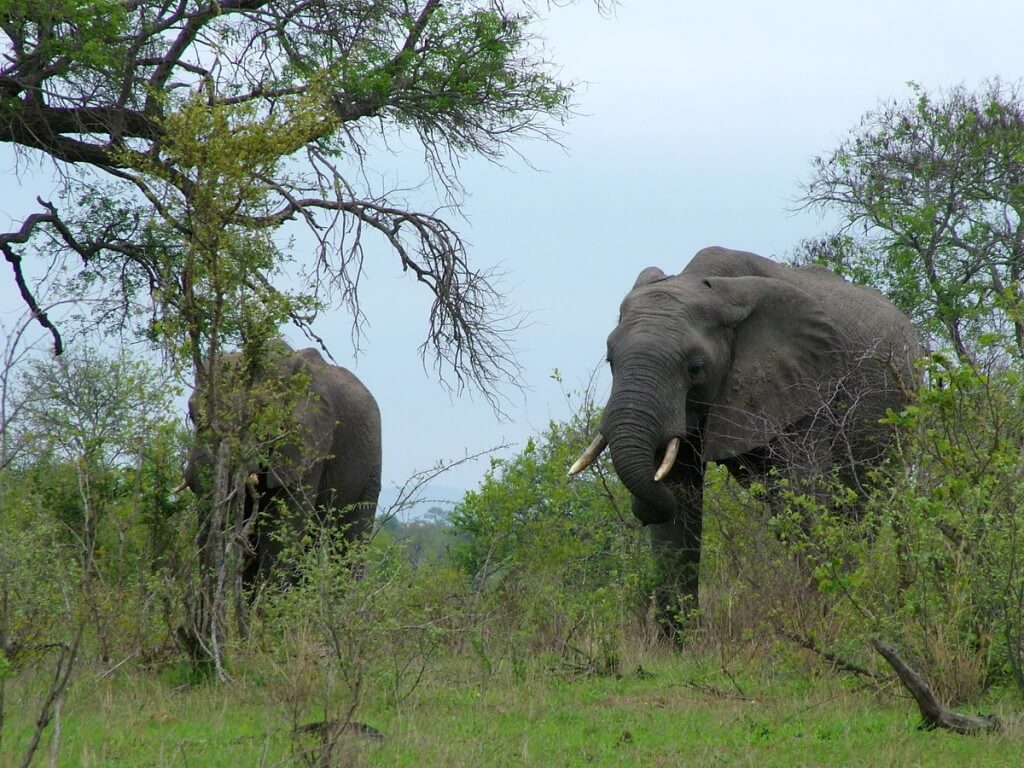Among the beauty of Monument Valley
After spending the early part of an afternoon at Mesa Verde National Park where we were enthralled with the Puebloan cliff dwellings, Bob and I made plans to arrive back at Monument Valley in time for the sunset. Not a minute was wasted in order to achieve our goal. The time was tight, but traffic was light, road construction closed up for the night, and our gas tank was full. Monument Valley here we come!
As we drew near Kayenta, the sun was getting low, and already, the buttes and mesas were being thrown into silhouette to the northwest, while a warm golden glow softened the contours of jagged outcrops and painted the desert an inviting shade of amber to the southeast.
At Kayenta, we had to turn north and drive a further 24 miles (38.5 km) into the state of Utah, but there, at the Utah border, the road to Monument Valley turns south again into Arizona. Bob and I were mesmerized by the towering sandstone buttes that took on all sorts of fanciful shapes. The ancient rocks soaring upwards from a seemingly boundless desert, for us, symbolized the last remaining western frontier.
I was familiar enough with the names of some of the rock formations to know that we were getting a glimpse of East Mitten and West Mitten Buttes, but even distant views from the highway of these iconic sandstone monuments did not prepare us for how impressive they would be when dramatically lit by the desert sunset.
Time was of the essence, so Bob and I failed to stop along U.S. Highway 163 as we approached Monument Valley Navajo Tribal Park, which is essentially a national park within the Navajo Indian Reservation. It encompasses the national treasure designated as Monument Valley. I was getting very excited at the prospect of seeing these well known monoliths up close.
It was from the look-off point at the Visitor’s Centre that we had our first real look at Monument Valley, and as we pulled up there, the setting sun was at its finest. The distinctive pinnacle rock formations were bathed in orange light, with three notable ones, West Mitten, East Mitten, and Merrick Buttes in full view from that one spot.
Monument Valley is not a valley at all, but rather a vast stretch of flat land punctuated by enormous rock features that were sculpted from the Cutler Formation Sandstone. The towering sandstone formations are the result of eons of erosion of the Colorado Plateau by meandering rivers. Two of the most famous monoliths are the West Mitten and the East Mitten Buttes, each a geological monument with a thin outcrop that conspires to simulate a hand in a mitten.
Here we see East Mitten and Merrick Buttes both painted a rich reddish-orange where they sit prominently above the undulating red desert sand.
Wanting to gain a different perspective on the massive formations, Bob and I returned to our car and moments later found the access point to the valley floor along Valley Drive. This 17-mile long (27 km) graded dirt road crosses the red siltstone, the sand derived from the Cutler formation and deposited by the rivers over centuries. You can see the route passing through the landscape in the centre of our photo.
Valley Drive is a very rough and rugged road carved into the desert over which tourists can drive to gain a closer view of some of the striking towers, spires, mesas, and buttes such as Elephant Butte seen on the left in this photo. Access to more remote areas and a greater share of Monument Valley is controlled and requires visitors to join tours conducted by official Navajo guides. This is to preserve the scenic beauty and traditional land-use patterns that have been in place for generations of Navajo people.
The rocky approach along Valley Drive gave way to the first level parking area where Bob and I had an unimpeded view of the desert floor as it extended outwards to the foot of the formations. Looking out over the sprawling desertscape, it was hard to believe that we were standing at an elevation of some 5,000-6,000 feet (1,500-1,800 m) above sea level.
Monument Valley is situated in the middle of the Great Basin Desert. Few creatures inhabit the dry desert habitat of Monument Valley, although we did see a Desert Spiny Lizard, but the siltstone is liberally spotted with sharp, greyish-green sagebrush and snakeweed despite the arid conditions.
At our new viewing location, Merrick Butte towered over us, and with the flat top of this formation having a height of 6,206 feet (1,892 m), this isolated hill seemed the perfect example of a butte with its vertical, straight sides.
The crepuscular rays of the sun in the western sky really highlighted the brilliant colour of the sandstone layers left behind in these dramatic formations, as well as that of the weathered siltstone, all of which are red because of the exposed oxidized iron.
As the sun settled lower on the horizon, dark shadows stealthily crept up the solid sandstone shapes, but Bob and I still had an expansive view of the area’s many notable features including King’s Throne Butte (on the left), and Stagecoach, Bear and Rabbit, and Castle Buttes arranged all in a row,
plus Big Indian (on the left) and Brigham’s Tomb (centre) with King’s Throne to the right.
Gazing out over the surreal vista of the Northern Buttes kindled, for Bob and me, fond memories of many western movies knowing that a good share of them had been filmed right there at that exact location. One of the first movies that used this area as a set was Stagecoach, which was directed by John Ford in 1939. Forever more, Monument Valley has stood as the iconic symbol of the American West.
In the distance, a steep mesa still glowed with light on its western-facing cliffs,
while Bob and I stood steeped in deeper shadows…
with hopes that the darkness would hold off just a wee bit longer.
With Sentinel Mesa in full shadow, a fragment of sunlight found Castle Butte and had it blazing in the darkening blue sky like some flaming torch held aloft. Is it any wonder that this is the sacred heart of the Navajo Nation? Infused in the red, rough and unpredictable landscape is the sense of harmony and the respect for the land that the Navajo people treasure. We could almost sense the ancestral spirits of the Navajo who have inhabited this region for centuries.
Merrick Butte earned its name because, in 1880, a prospector was killed nearby after repeatedly disregarding warnings about trespassing in the valley. Where moments earlier, there was sufficient light to appreciate all the crevices and contours of this stout formation…
now twilight erased from view the finer details of the butte leaving us with only a simple dark silhouette posing against the pastel-coloured horizon.
Bob and I hung in there as the shadows grew longer…
until finally an absolute curtain of darkness erased every vestige of the deep red-coloured badlands. The dark blue sky was met with the jagged contours of towering buttes and pointed spirals that bespoke of the remoteness and simplicity of the Valley. As Bob and I stood in silence, we could almost hear faint whispers from the ancestral people.
The vast, wild and sun-baked region of Monument Valley straddles the border between Utah and Arizona in the area known as The Four Corners. The region looks the same today as it did a hundred years ago and even thousands of years before that, and the sandstone formations have become some of the most photographed subjects in the world. Bob and I would like to return to this wild west frontier and do further exploration, preferably on horseback. Now that would be pretty fantastic!
You May Also Like:
Visiting Cerro Pelon Monarch Butterfly Sanctuary on Horseback
Exploring The Cliff Dwellings At Mesa Verde National Park
An Eastern Wolf in Algonguin Park
Our South African Journey to Kruger National Park

